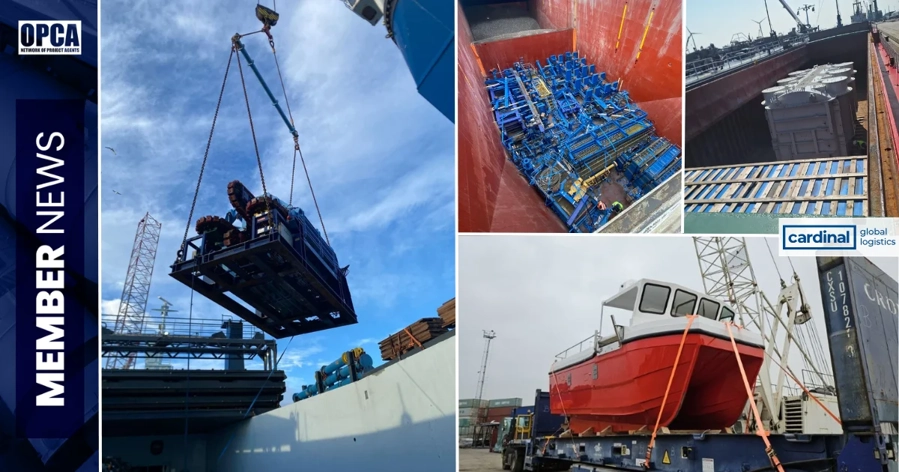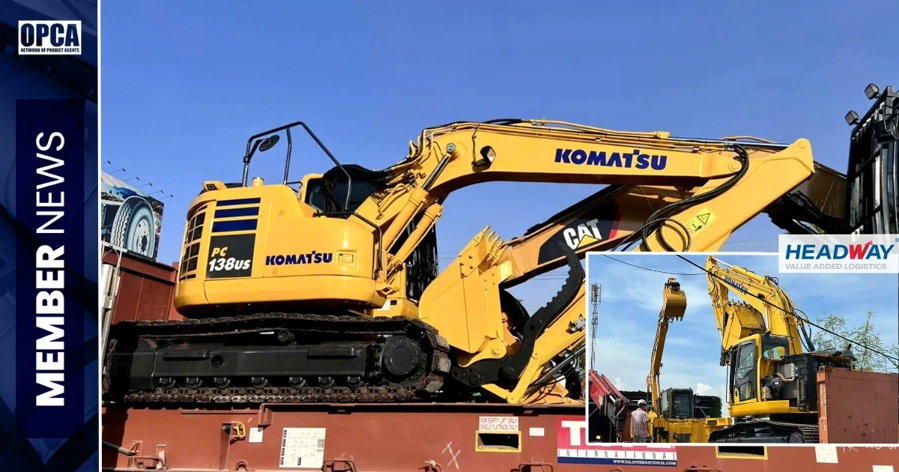The Giants of Trade: Navigating Project Cargo
Blades across a football pitch long, reactors several hundred tons heavy, and turbines tall enough to loom over city skyscrapers – unusual anomaly or exceptional event? Neither. It is an everyday reality for project cargo. Unlike repeatable standardized container trade, oversized cargo transportation is non-uniform cargo. Each shipment is one off with unique solutions called for, custom-built ships demanded, and integrated knowledge. It is here where project cargo shipowners, heavy lift transport operators, and freight forwarders stand center stage among some of today's most extreme supply chain conundrums.
Project Cargo: Beyond the Box
Standardized containers revolutionized global trade by making products easy to stack, ship, and trace. But not everything can be boxed. Project cargo involves the gear and machines that propel an economy — things like industrial boilers, offshore modules, turbines, reactors, and massive construction cranes.
Due to their size and weight, such cargo involves heavy lift shipping services beyond standard logistics. A single piece oversized shipment could require a ship with onboard cranes, custom lifting gear, or roll-on/roll-off facilities. Terminals for such cargo involve quay strengthening, deep drafts, together with storage units especially customized to non-standard configurations.
In most cases, the process is initiated months before even arriving at the port. Surveyors, engineers, and logistical coordinators confer with each other to pre-plan routes that account for bridges, tunnels, weight restrictions, even weather. Each shipment is a single project with months before last move being devoted to planning.
Why Project Cargo Matters to Global Trade
The importance of oversized cargo transportation should never be undervalued. From power plants to refineries to massive construction to offshore oil rigs, heavy transport rigs are cornerstones to global development.
When a turbine is late, projects for a complete wind farm come to a standstill. When refinery parts don't make it to a construction site, energy production is slowed. Even transportation to deliver a piece of mining equipment can affect a country's exports. In a way, then, project cargo is more than a component of logistics — it is directly related to industry and economic expansion.
As such, the scale also renders it inseparable from the international supply chain. Whilst store shelves stay stuffed with containerized cargo, project cargo guarantees that infrastructure supporting such supply chains can be constructed, preserved, and expanded.
Heavy Lift Operations: Engineering Meets Logistics
Over-sized transportation is a marriage of engineering sophistication with logistical expertise. Heavy lift transportation is not merely about moving something massive; it is about an efficient, safe, and cost-effective movement.
Think about steps:
- Route planning and surveying: Teams analyze all parts of the journey, from land routes to port installations, where bottlenecks and risks occur.
- Vessel selection: Choosing between multipurpose ships, semi-submersible vessels or heavy lift ships with specially designed cranes.
- Lifting plans: Specialized rigging crews design custom lifting plans with center of gravity and distribution considerations.
- Clearance documentation and compliance: Customs clearance, permits, and international standards should be flawlessly aligned to avoid costly delays.
Each stage encompasses cooperation among a number of players — freight forwarders, port operators, carriers, and engineers. As opposed to with container ship transport where everything is routine, any project cargo movement is unique.
Technology and Visibility in Oversized Cargo Shipping
Just as with everything else with respect to maritime trade, digital solutions have been changing project cargo logistics. In-real-time cargo tracking, predictive analytics, and integrated planning systems are no longer luxuries but necessities to track complex supply chains.
For project cargo networks, a few advantages are:
- Improved port synchronization with carriers and inland operators.
- Improved cost management with efficient routing and storage.
- Greater reliability because predictive software marks possible delays even before they happen.
Technology also increases visibility to shipper customers. While single-time oversized shipments seemed like a gamble today customers monitor progress from point of origin to destination. Transparency begets confidence building trust which allows construction schedules, energy projects or infrastructure schedules to be planned more surely.
The Human Factor: Expertise That Moves Giants
Underpinning each heavy lift delivery is something more than merely steel and machines but also people whose expertise makes the lift possible. Freight forwarders, rigging men, engineers, and port workers coordinate to have cargo loaded safely transported on schedule.
It is more than about technical expertise. It is also about cross-cultural competence, local knowledge, and effective communication. For an ocean freight forwarder with cross-border routes to handle, dealing with regulatory systems or overcoming cross-cultural barriers is often as necessary as figuring out weight distribution. It is the human aspect which transforms risk into reliability.
Sustainability: A Growing Priority
Beyond operational expertise, sustainability is dictating future trends for project cargo. Big shipment projects usually involve long routes and high fuel consumption. As calls grow for the shipping industry to reduce its footprint environmentally, sea freight shipping lines overseas and harbors are working together to seek cleaner fuels, more efficient routes for shipping, and higher-efficiency machinery.
For freight forwarders, it also means directing customers towards smarter logistics choices -- grouping transport to reduce waste, picking more environmentally friendly partners, or adopting technologies to increase efficiency. Cleaner operations help the planet as much as they strengthen supply chains by reducing delays and waste.
The Giants and the Supply Chain of Tomorrow
Heavy lift shipping demand is only increasing. Offshore structures, wind farms, high-tech cities, and industrial plants rely on transportation of oversized pieces to be a possibility. As supply chains get more interconnected, transportability of such giants safely and efficiently becomes a factor that determines international trade.
What sets project cargo apart is that it's more than just moving commodities or pieces of merchandise from point A to point B — it's about enabling development. Every successful heavy lift contributes directly to building the infrastructure that powers economies and communities.
OPCA: Connecting the Experts in Project Cargo
At the Overseas Project Cargo Association (OPCA), project cargo is not a challenge to be observed from afar — it is the core of our expertise. OPCA brings together project cargo shipping companies, heavy lift transport specialists, and freight forwarding agencies from across the world.
Our members collaborate across borders, sharing resources, knowledge, and innovative solutions for oversized cargo shipping. From breakbulk operations to multimodal strategies, OPCA members know how to manage cargo that standard logistics cannot.
By joining OPCA, companies gain access to a trusted project cargo network built on experience and collaboration. It is a community that not only connects businesses with the best shipping companies for heavy lift but also helps them succeed in the evolving landscape of global logistics.
Explore the OPCA Directory to connect with professionals who understand the scale, the complexity, and the responsibility of moving the giants of trade.
_logo.webp)



